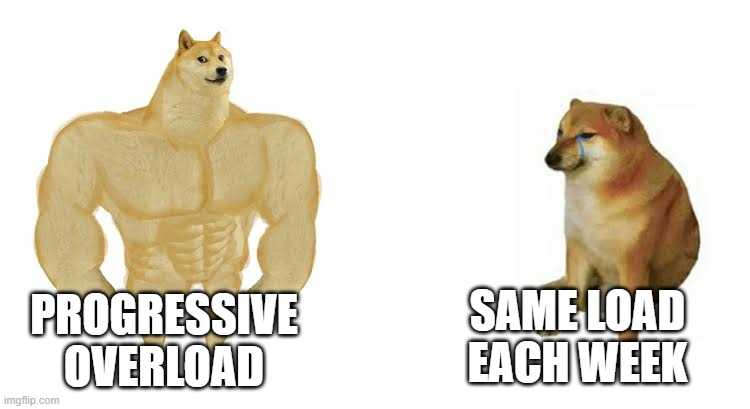The Ultimate Guide to Progressive Overload: How to Continuously Increase Strength
If you’re serious about strength training, there’s one concept you absolutely need to master: progressive overload. This principle is the key to making continuous gains in muscle size and strength over time. In this ultimate guide, we’ll dive deep into what progressive overload is, why it’s so important, and how you can effectively implement it in your own training to unlock your full potential.
What is Progressive Overload?
Progressive overload is a strength training principle that involves gradually increasing the stress placed on your muscles over time. This can be done by:
- Increasing the weight you lift
- Performing more reps with the same weight
- Increasing training volume (sets x reps x weight)
- Decreasing rest times between sets
- Improving form and technique to lift more efficiently
The key is to consistently challenge your muscles with a stimulus that is slightly greater than what they are accustomed to. This forces your body to adapt by growing stronger and building more muscle.
Why is Progressive Overload Important?
Your body is an incredibly adaptive machine. When you first start lifting weights, you’ll likely see rapid gains in strength as your muscles adapt to the new stimulus. However, if you continue lifting the same weights for the same number of reps, your progress will eventually stall. This is because your body has already adapted to the current training stimulus.
Progressive overload is important because it prevents plateaus and allows you to continue making progress over the long-term. By consistently challenging your muscles with greater loads, you provide the necessary stimulus for ongoing strength and muscle gains.
How to Implement Progressive Overload
Now that you understand the importance of progressive overload, let’s look at some practical ways to implement it in your training:
1. Microloading
Microloading involves making small incremental increases in weight each week. For example, adding 2.5 lbs to your bench press every week. While it may not seem like much, these small increases add up substantially over time. Microloading is one of the most sustainable ways to progressively overload, especially for more advanced lifters.
2. Double Progression
With double progression, you aim to increase the number of reps you perform with a given weight before increasing the load. For instance, if your program calls for 3 sets of 8-12 reps, you would stick with the same weight until you can perform 12 reps for all 3 sets. Once achieved, increase the weight slightly and aim for 8 reps again. Rinse and repeat.
3. Increase Training Volume
Increasing your overall training volume (sets x reps x weight) is another way to progressively overload. You can achieve this by adding more sets, performing more reps, or using heavier weights over time. A simple way to apply this is to add an extra set or a few additional reps each week while keeping other variables constant.
4. Improve Form and Technique
Oftentimes, using better form allows you to lift slightly more weight or perform additional reps. Focusing on proper technique, such as maintaining tightness, controlling the eccentric portion of the lift, and using a full range of motion, can lead to progressive overload even if the weight on the bar remains unchanged.
Progressive Overload Mistakes to Avoid
While progressive overload is crucial, there are a few common mistakes to watch out for:
-
Adding weight too quickly: Aim for small, sustainable increases instead of trying to add too much too soon. Overshooting can lead to form breakdowns and increased injury risk.
-
Neglecting deloads: Continuously adding stress to your body without occasional deload weeks can lead to overtraining and burnout. Take a deload or lighter week every 4-8 weeks to allow your body to recover and adapt.
-
Sacrificing form for weight: Never compromise your form in order to lift heavier weights. This is a recipe for injury. Focus on proper technique first, then gradually add weight.
The Bottom Line
Progressive overload is an essential principle for anyone looking to maximize their strength training progress. By gradually increasing the demands placed on your muscles over time, you provide the stimulus needed for continuous gains in size and strength.
Implement the strategies outlined in this guide, stay patient and consistent, and watch your strength levels soar to new heights. Remember, success in the gym is all about small, incremental gains compounded over time. Master the art of progressive overload, and you’ll be well on your way to unlocking your ultimate strength potential.
